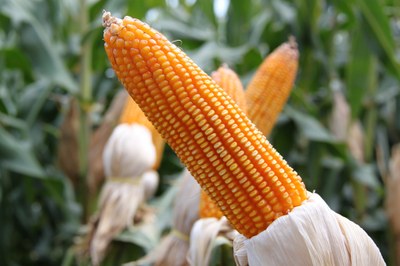Porto Alegre, August 8, 2023 – Brazilian growers continue trying to observe the agribusiness media that reflects the possibility of a super crop failure in the United States and an explosion in international prices. While growers are following once again distorted information, prices on the CBOT break USD 5.00/bushel again, and in thirty days the harvest will be advancing, in what may still be the biggest US production on record. The exchange rate ended up offering a certain help to prices in recent days, but it only prevented a greater deterioration and offset part of the CBOT lows. In the domestic market, the harvest is taking place slowly, with growers waiting for the loss of grain moisture to reduce expenses in warehouses. Many are storing corn in warehouses and silo bags, and, of course, this supply will have to make room for the soybean crop next January.
Decision-making in marketing has been quite difficult for growers in recent years. A good part of this difficulty comes from the erratic picture brought by the agribusiness media to growers, that is, in an attempt to “please”, it always brings them bullish and comforting news but without informing the real bias that would bring due protection to their decisions. In these 2023 US and Brazilian crops, we can see this same bias. For the Brazilian second crop, private and even public companies have contained production numbers perhaps in the attempt to help the market not to show the collapse of excess supply, and necessarily having to seek exports. About the US crop, there has been erratic information in the Brazilian media, even on TV, that production is suffering heavy losses and prices will skyrocket.
Eventually, what we see is that not even the US market is showing the bias of aggressive price hikes on the CBOT. It reflects the moment, of course, but without showing a sustaining curve for prices in the medium term and, mainly, on the eve of a US harvest that could set a record. The Brazilian domestic market is feeling this environment right now. Growers are trying to store as much as possible in their silos or silo bags, raising funds in EGF loans not to sell, and betting on the upward bias. This also seems a little normal, that is, as prices have sharply dropped, the attempt is to wait for some high that will leave prices a little better ahead.
Meanwhile, exports are trying to empty the domestic market within their limitations. Soybeans rallied in recent weeks, premiums have improved, and they are once again occupying more space in ports along with soymeal, sugar, and corn. This scheduled soybean record in August, over 8 mln tons, is taking space away from corn for even greater exports. In July, Brazil shipped well, close to 6 mln tons, with Secex showing 4.3 mln tons. In August, corn reached appointments of 8 mln tons, a new record. Perhaps, shipments do not reach this entire volume. In early August, 850 thousand tons were shipped. In any case, corn shipments for exports are progressing well.
The issue is that it is a portion of the second crop flow that is occurring. There are 100 mln tons of the second crop being reaped, and exports have not been able to handle all this volume in the short term. We continue to focus on the annual shipment volume of 50 mln tons, a possible volume. On top of that, the market will have to show its ability to ship with rising freight rates, a record US harvest arriving, and growers holding back sales in the interior. Brazil’s biggest risk is missing the optimal export window and then needing to sell at even lower prices to empty the surpluses.
With the good projections for the soybean crop in 2024, the concern from January onward will again be the space in warehouses. Corn may once again experience selling pressure at the end of the year to free up this space for soybeans. For the time being, growers are trying to bet on some movement with the CBOT futures and the exchange rate for some improvement in prices.
Now, harvests in all states are advancing. Some are still slow, while others are more advanced, as in Mato Grosso. Freights are starting to rise with so much flow to the port and the domestic market. There is a worrying lag in fuel prices that could lead to a shortage of diesel oil in the domestic market in the coming few weeks. And, of course, this affects CIF prices in the domestic market, but it does not help to send export prices higher. So, internal cost highs will imply lower sales at the selling end, that is, in the grower’s prices.
Last week, prices and export purchases began to be extended from October onward due to the logistics capacity for August and September. Basically, at BRL 60 for October and payment in November in the port. With high freight rates, the exchange rate only ended up helping to contain a greater decline in ports, but not to bring better prices to growers in the interior. Perhaps, once the report on the 11th is released and the prospect of a crop failure in the United States is reduced, the advance in sales will be greater. However, it will not find immediate liquidity in exports, and this sales movement could be converted to consumers in the domestic market. Therefore, close attention to the US crop numbers this week.
Copyright 2023 – Grupo CMA

